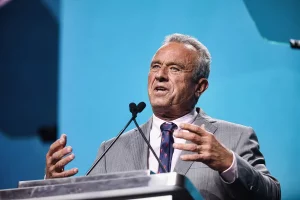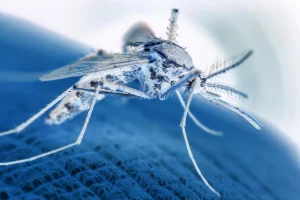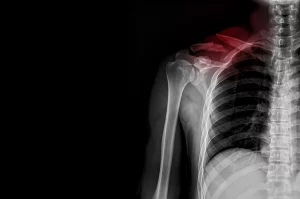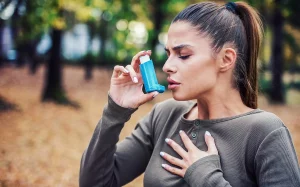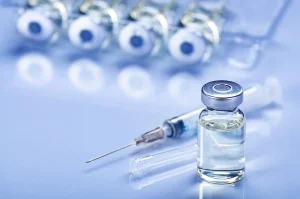(HealthDay News) — All immigration to the United States will be stopped to protect Americans during the coronavirus pandemic, President Donald Trump announced late Monday night, as the country’s COVID-19 death toll topped 42,000.
“In light of the attack from the Invisible Enemy, as well as the need to protect the jobs of our GREAT American Citizens, I will be signing an Executive Order to temporarily suspend immigration into the United States!,” Trump wrote in a 10 p.m. tweet.
Broad restrictions have already been placed on travel from Europe, China and other coronavirus hot spots, the Washington Post reported. Suspending all immigration could affect hundreds of thousands of visa holders and other would-be green card recipients who are planning to come to the United States, the newspaper said.
Meanwhile, the White House and Congressional leaders moved closer to agreement on a $470 billion coronavirus package that would pump more money into a small business loan program that has already run out of funding.
Roughly $100 billion in the latest economic stimulus deal would go toward hospital needs and coronavirus testing, the Associated Press reported.
“I think we are getting close to a deal,” Trump said during a Sunday briefing of the coronavirus task force.
The House has announced it could meet as soon as Wednesday for a vote on the pending package, the wire service said.
As the U.S. coronavirus death toll edged past 42,000 and the case count climbed to more than 780,000 on Tuesday, governors across America crafted plans to start to ease social distancing in the coming weeks.
But new estimates from Harvard University researchers suggest that the United States as a whole cannot safely reopen unless health officials triple the number of coronavirus tests that are now being conducted, The New York Times reported.
Governors in some of the states that have been hit the hardest are already calling for far more testing in the coming month.
The statistics from New York and New Jersey have been hopeful. In both states, the curve of new infections appeared to be flattening or dropping, the Times reported.
But New York Gov. Andrew Cuomo emphasized the need for federal help to carry out the widespread coronavirus testing that officials say is necessary to reopen New York’s economy.
Plans to reopen take shape
Talk of potentially reopening America came after Trump announced new federal guidelines last Thursday that governors could use going forward.
The national plan laid out three phases that would slowly return life to a “new normal” that continues to use some of the most fundamental aspects of social distancing.
“We are not opening all at once, but one careful step at a time. And some states will be able to open up sooner than others. Some states are not in the kind of trouble that others are in,” Trump said during a media briefing last week.
Reopening the country has become a critical goal, as the ranks of unemployed Americans have swelled to 22 million.
Coronavirus cases and deaths in several of America’s early hotspots continued to show signs of plateauing, while governors from those hard-hit states worked on their own regional pacts to help reopen those areas.
New York and six other Northeast states — New Jersey, Connecticut, Pennsylvania, Delaware, Massachusetts and Rhode Island — extended stay-at-home orders through at least May 15 while they work on those plans, CNN reported.
The governors of California, Oregon and Washington have announced a similar regional pact, the AP reported.
And seven Midwestern states have followed suit and announced a pact of their own, CNN reported.
Phased-in reopening
For his part, Trump continued to push for reopening at least part of the U.S. economy in early May as he released the national reopening guidelines.
The guidelines lay out three phases:
- Phase 1: All vulnerable individuals continue to stay at home. Physical distancing must be practiced in public places and non-essential travel must be minimized. If schools are closed, they should stay closed. Visiting senior living centers is still not allowed.
- Phase 2: Non-essential travel may resume. People should avoid public gatherings of 50 or more, unless physical distancing is possible. Visits to senior centers would still be prohibited, but schools and day care centers could re-open.
- Phase 3: This would be the country’s “new normal.” Physical distancing in public places is still recommended, but vulnerable individuals can resume public activities. Visits to senior centers can resume.
There is no set timeline for moving through each of the three phases, according to the AP. Governors will make that decision, but a state or region would have to experience another 14-day decline in cases before moving to the next phase, the wire service said.
When Americans do leave their homes, federal guidance now urges everyone to wear face coverings in public to curb the spread of COVID-19.
Economic rescue plan
As the U.S. economy continues to falter, Americans have struggled to find out if they can receive benefits from a $2 trillion stimulus package that was passed into law in March. The financial relief is starting to be felt as state and federal agencies process millions of aid applications from small businesses and the newly jobless, the Post reported.
The legislation is set to send $1,200 to millions of Americans, including those earning up to $75,000, along with $500 per child. It will also give an additional 13 weeks in unemployment aid and a four-month enhancement of jobless benefits, the Times reported.
However, funding for the Paycheck Protection Program was exhausted last Thursday, meaning that the Small Business Administration (SBA) had to stop approving applications, the Post reported. More than 1.4 million loans worth more than $315 billion have already been approved, according to the SBA.
In some good news, millions of Americans have started to see promised tax rebates directly deposited into their bank accounts, though some folks have experienced problems getting the money, the Post reported.
The help comes not a moment too soon, as roughly 90% of Americans are under stay-at-home orders, the AP reported.
States battle coronavirus
New York remains the epicenter of the coronavirus outbreak in the United States, though key COVID-19 statistics have been leveling off.
In preparation for any reopening in the coming weeks, Cuomo announced Sunday that the state will implement the “most aggressive” antibody testing program in the country over the next week, CBS News reported.
“Nobody has done testing on this level ever,” Cuomo said, but he emphasized that any plan to reopen the state includes knowing how many have been infected.
To also protect against the spread of COVID-19, Cuomo issued an executive order last week stating all New Yorkers must have a mask or mouth and nose covering when they are not maintaining social distancing in public, CBS News reported.
Meanwhile, Massachusetts has become a coronavirus hot spot, as the state’s death toll is set to almost double in less than a week.
COVID-19 deaths are expected to surpass 2,000 this week in that state, the AP reported.
“We’re right in the middle of the surge now,” Gov. Charlie Baker said Sunday.
Vice President Mike Pence said the White House is closely watching the Boston area, and coronavirus task force coordinator Dr. Deborah Birx, said Monday that officials are “very much focused” on Massachusetts, the wire service reported.
There were 103 new deaths reported in Massachusetts on Monday, bringing the state’s death toll to more than 1,800, according to the AP. And more than 1,500 new cases were reported, for a total of more than 39,500 across the state.
Massachusetts isn’t the only state struggling to control the spread of coronavirus. According to a Times tally, the top five states in coronavirus cases as of Tuesday morning are: New York with more than 247,500 cases; New Jersey with nearly 89,000; Massachusetts with more than 39,600; Pennsylvania with just over 34,000; and California with nearly 34,000.
At the same time, several other states announced plans on Monday to reopen in the next week or two.
Georgia Gov. Brian Kemp said he will restart the state’s economy by the end of the week, saying many businesses could reopen as early as Friday, the AP reported.
In Tennessee, Gov. Bill Lee said he was not extending his “safer-at-home” order that is set to expire on April 30, the Times reported. Businesses in Ohio are expected to reopen on that date as well.
And in South Carolina, Gov. Henry McMaster said that department stores and some other retail businesses that had previously been deemed nonessential would be allowed to reopen on Tuesday. However, they must adhere to social distancing guidelines. Public beaches in that state will also reopen on Tuesday.
But these rapid restarts run counter to the advice of many experts, including Dr. Anthony Fauci, the nation’s top infectious diseases expert, who warned again Monday that resuming business too soon risked a fresh spike in infections, the AP reported.
Globally, the situation remains grim. In Europe, Spain reported 21,282 deaths by Tuesday, despite signs the infection rate is slowing, a Johns Hopkins University tally showed. Deaths in Italy also remain high at 24,114, although numbers have begun to level off there as well. Both countries are cautiously moving through plans to slowly reopen their economies.
Worldwide, the number of reported infections neared 2.5 million on Tuesday, with more than 171,000 deaths, according to the Hopkins tally.
More information
The U.S. Centers for Disease Control and Prevention has more on the new coronavirus.
Source: HealthDay
Copyright © 2025 HealthDay. All rights reserved.











